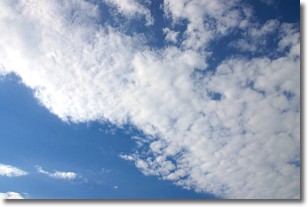Weather Alert in North Carolina
Special Weather Statement issued August 12 at 2:21PM EDT by NWS Morristown TN
AREAS AFFECTED: Cherokee; Clay; Scott; Campbell; Claiborne; Hancock; Hawkins; Sullivan; Johnson; Morgan; Anderson; Union; Grainger; Hamblen; Northwest Cocke; Cocke Smoky Mountains; Northwest Greene; Southeast Greene; Washington; Unicoi; Northwest Carter; Southeast Carter; Roane; Loudon; Knox; Jefferson; NW Blount; Blount Smoky Mountains; North Sevier; Sevier Smoky Mountains; Sequatchie; Bledsoe; Rhea; Meigs; McMinn; Northwest Monroe; Southeast Monroe; Marion; Hamilton; Bradley; West Polk; East Polk; Lee; Wise; Scott; Russell; Washington
DESCRIPTION: A stream of tropical moisture will move north from the Gulf into the Tennessee valley and southern Appalachians through Wednesday. Periods of showers and embedded thunderstorms can be expected. Due to the abundant moisture these storms will be capable of producing excessive rainfall rates. If the storms move across the same locations, localized flash flooding is possible. Persons living near streams need stay alert for the potential of rapid water rise and flash flooding. Localized flooding of low lying areas and roadway flooding are possible. Please stay tuned to your NOAA weather radio and favorite radio and TV stations for the latest forecast and possible flash flood warnings or advisories in your area.
INSTRUCTION: N/A
Want more detail? Get the Complete 7 Day and Night Detailed Forecast!
Current U.S. National Radar--Current
The Current National Weather Radar is shown below with a UTC Time (subtract 5 hours from UTC to get Eastern Time).

National Weather Forecast--Current
The Current National Weather Forecast and National Weather Map are shown below.

National Weather Forecast for Tomorrow
Tomorrow National Weather Forecast and Tomorrow National Weather Map are show below.

North America Water Vapor (Moisture)
This map shows recent moisture content over North America. Bright and colored areas show high moisture (ie, clouds); brown indicates very little moisture present; black indicates no moisture.

Weather Topic: What are Stratus Clouds?
Home - Education - Cloud Types - Stratus Clouds
 Next Topic: Wall Clouds
Next Topic: Wall Clouds
Stratus clouds are similar to altostratus clouds, but form at a
lower altitude and are identified by their fog-like appearance, lacking the
distinguishing features of most clouds.
Stratus clouds are wider than most clouds, and their base has a smooth, uniform
look which is lighter in color than a nimbostratus cloud.
The presence of a stratus cloud indicates the possibility of minor precipitation,
such as drizzle, but heavier precipitation does not typically arrive in the form
of a stratus cloud.
Next Topic: Wall Clouds
Weather Topic: What are Altocumulus Clouds?
Home - Education - Cloud Types - Altocumulus Clouds
 Next Topic: Altostratus Clouds
Next Topic: Altostratus Clouds
Similar to cirrocumulus clouds, altocumulus clouds are
characterized by cloud patches. They are distinguished by larger cloudlets
than cirrocumulus clouds but are still smaller than stratocumulus clouds.
Altocumulus clouds most commonly form in middle altitudes (between 2 and 5 km)
and may resemble, at times, the shape of a flying saucer.
These uncommon formations, called altocumulus lenticularis, are created by uplift
in the atmosphere and are most often seen in close proximity to mountains.
Next Topic: Altostratus Clouds
Current conditions powered by WeatherAPI.com




